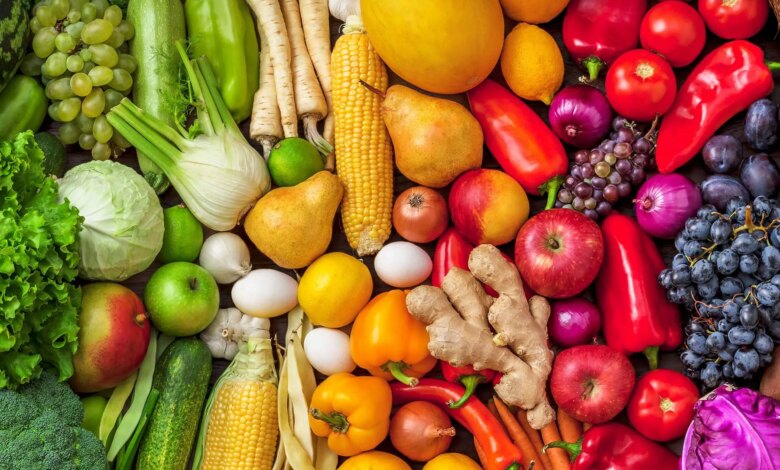A New Guide to Healthy Eating

Feb. 16, 2024 – When it comes to your diet, your plate is important. Experts say it should include a healthy protein, whole grains, vegetables, and fruit. But rather than ration those ingredients, it might be easier – and healthier – to mix and match colors.
Not only does this rainbow-driven strategy fuel the body for its best performance, but it might help it prevent diseases or lower disease risk. By shifting the perspective from the plate to the rainbow, we start to understand that variety really IS the key to life.
“Our diet should ideally be a diverse combination of foods that allow certain compounds in foods to interact with one another as well as with systems in the body to produce health benefits,” said Christopher Browne, a doctor of chiropractic and director of human nutrition and functional medicine at the University of Western States in Portland, OR.
But not every type of food provides these benefits, especially “ultra-processed food, which has been the death knell of health in North Americans,” said Andrea Boggild, MD, medical director of the Tropical Disease Unit at Toronto General Hospital, and an associate professor of medicine at the University of Toronto.
Knowing which fruits and vegetables may provide the greatest benefits is just as important to ensuring there’s always some room for tasty combinations to match palates. The rainbow way is not about restriction but rather a predominance of whole, plant-based foods along with a few items that maintain what Browne referred to as the “sensory experience of food, along with its social and cultural aspects.”
All it takes is going back to the basics and making sure that the plate contains all of the major plant colors: red, orange, yellow, green, and blue-purple.
Red
Think beets, strawberries, cherries, and red bell peppers. These foods are rich in antioxidants and contain nutrients that help the body fight inflammation and maintain a healthy immune response. But don’t forget tomatoes, which researchers have recently discovered may be able to fight infectious bacteria responsible for many food-borne illnesses. Jeongmin Song, PhD, a researcher in the Department of Microbiology and Immunology at Cornell University College of Veterinary Medicine in Ithaca, NY, said though the evidence is early, findings showed that fresh tomato juice appears to kill salmonella and E. coli, both of which affect the gut and urinary tract. “The implication was that it’s possible that eating fresh vegetables and fruits will help eliminate bacteria,” she said.
Orange
Like their red cousins, orange plants and vegetables share substances known as carotenoids that are not only responsible for their deep pigmentation, but also appear to play an important role in hormone regulation and reproductive health. These benefits are linked to their strong antioxidant activity, especially in the ovaries. Examples include carrots, yams, persimmons, oranges, apricots, mangoes, and butternut squash. Browne said some research suggests that eating more orange fruits may also potentially delay the start of menopause.
Yellow
Anything but mellow, yellow fruits and vegetables are essential for keeping the gut running smoothly, help to offset extremes in blood sugar when consumed with starchy foods, and also contain powerful antioxidants. Golden delicious apples, Asian pears, lemons, bananas, and pineapples fall into this category. But don’t forget ginger, a flowering plant with a root that packs a punch when it comes to reducing nausea and helping food move through the digestive tract and out of the stomach. Keep in mind that “timing can be crucial,” said Browne. “Some people tolerate things fine with food in their stomach that they wouldn’t tolerate on an empty stomach,” he explained, referring specifically to yellow foods that are particularly acidic, like citrus fruit.
Green
Nothing shouts “plant” more than green. A star of the plate, foods like leafy greens (spinach, chard, collards, kale, and other lettuces), cruciferous vegetables (broccoli, Brussels sprouts), artichokes, snow peas, and fruits like pears and green apples are powerful antioxidants that have been linked directly to heart health. “Vascular health benefits include reducing blood pressure and controlling the expression of genes that promote inflammation,” Browne said. Peppers, especially hot peppers, are especially known for their anti-inflammatory properties. But there is one special standout in the green category: avocados. “Avocados are an amazing source of many of the micronutrients we need every day,” said Kathleen Holton, PhD, MPH, a nutritional neuroscientist and provost associate professor at American University in Washington, DC.
Blue-Purple
It’s ironic that the color blue is often associated with sadness. Not only are blue and purple fruits and vegetables powerful antioxidants, but they have been shown to balance mood, boost learning ability, and positively affect the nervous system. “There’s great research on blueberries and cognitive function,” Holton said. “But we can do even more if those blueberries are part of a healthy diet that removes exposure to certain food additives that cause negative effects.” In addition to blueberries, grapes are a great source of “phytonutrients,” especially naturally occurring substances like polyphenols, which boost their antioxidant properties. “We’re surprised that grapes (red, concord) in particular have many antimicrobial properties to fight infection,” said Song, noting that these power players are the next candidates for laboratory studies. Other important blue-purple foods include blackberries, black raspberries, boysenberries, figs, plums, eggplant, purple cabbage, and purple cauliflower.
Garlic: A Superstar
One way to determine the nutrient value of different fruits and vegetables is the vibrancy of their color. But it turns out that white plays a starring role on the rainbow plate. “If you were going to call something a superfood, garlic would be my number one choice,” Holton said. “Garlic has antibacterial, antiviral, antifungal, and anticancer properties,” she said, “so garlic (and onions) become very flavorful, beautiful additions that are very nutrient-dense when people are cooking.” (Not to mention, garlic and onions are drivers of great flavor).
The gold at the end of the rainbow is wealth, but not in the most common sense of the word. The best advice is to stop counting calories and quantities and ensure that you are putting multicolored foods into your diet every day.
“Diet is all about these different important chemicals that our body needs to have to function optimally,” Holton noted. “The power comes when we put them all together.”
Source link




